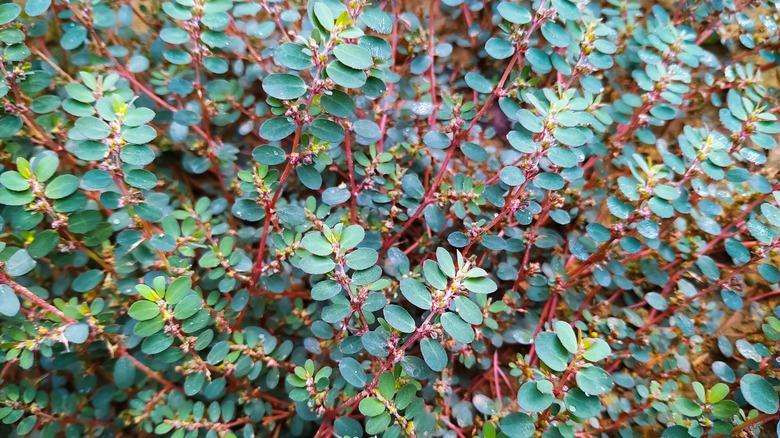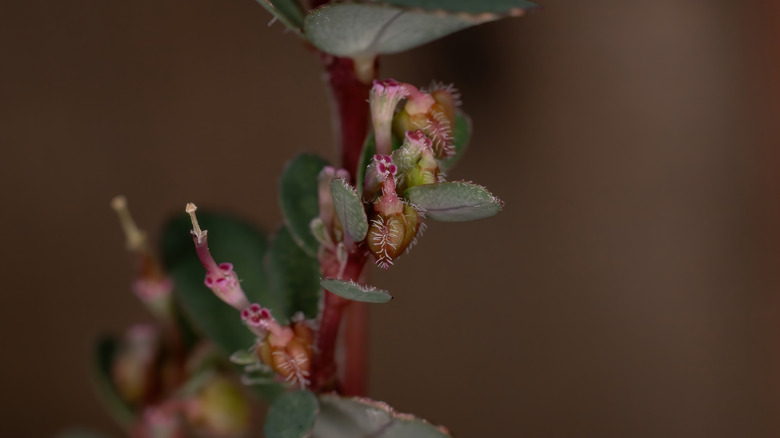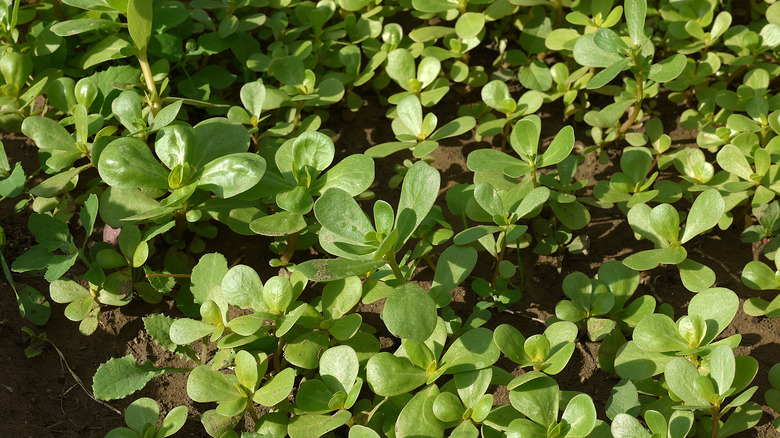Purslane (Portulaca oleracea) has piqued the fancy of many gardeners and foragers, particularly the health-conscious ones. Despite being a common wild plant, several green enthusiasts grow it for its remarkable nutritional profile, boasting high levels of omega-3 fatty acids, vitamins, and minerals, and use it in their soups, salads, and other dishes. However, not all purslane-mimicking varieties are edible. Spurge family plants like Prostrate spurge (Euphorbia prostrata) and Spotted spurge (Euphorbia maculate) are purslane’s poisonous doppelgangers that should never enter your garden.
Unlike oleracea’s superfood and super plant status, spurges are considered dangerous and unfit for consumption. Their stems carry a noxious milky sap, which harms humans and pets, causing redness and skin irritation. Moreover, these native summer annuals are treated as weeds, making them unpopular. While it is easy to confuse spurges with purslane due to their reddish stems, the former support thinner stems that ooze out white sap. The two varieties can also be differentiated based on their leaf characteristics.
How to tell spurge apart from purslane using leaves

Despite their uncanny resemblance to common purslane, spurges can be easily identified by closely examining their leaves. In contrast to the fleshier and more succulent oleracea varieties, spotted spurges grow delicate, paper-thin, flat leaves, which lack the thickness and sturdiness of the common purslane. Moreover, the ⅛- to ½-inch long, green leaves of a spurge plant always grow in pairs and are placed on the opposite sides of the stem. The only exception is when they are developing at the branch’s junction, and so appear evenly placed like a wheel’s spokes.
All leaf pairs grow parallel on the stem, never exceeding two leaves at any given point. In contrast, purslane’s leaves exhibit a whorl-like configuration and mostly grow in fours, as two small and two large leaves from the stalk. Additionally, spotted spurges have indented, serrated, or toothed leaves, unlike the smoother edges on their plant twin. However, these may be hard to spot if the weed variety has tiny serrations. Finally, these weeds carry a red mark near the leaf’s central vein—explaining their name—which are missing from purslane.
Identifying spurge using other plant characteristics

Like their leaves, the stems of Euphorbia spurges are not fleshy and can instead be hairy, in contrast to the succulent, hair-less purslane stems. Their stems are also relatively thinner and fragile. But what truly makes these poisonous weeds distinct is their release of a milky sap when their stems are cut or broken apart. This creamy latex is harmful, causing severe skin irritation, including blistering, redness, and swelling. Its high toxicity can even cause blindness if the eyes are exposed to the white sap, necessitating this weed’s removal from your lawn.
Another defining feature of the native spurge is the presence of smaller and less conspicuous flowers. In contrast to the bright yellow, orange, or red flowers that bloom on the common purslane throughout spring and fall, prostrate spurges develop tiny white blooms at their leaf’s base during the summer, which may also carry the toxic latex. Similarly, pink flowers can be found on spotted spurges. Regardless of how pretty the plants may be, it’s ideal to eliminate these purslane look-alikes from your yard.



